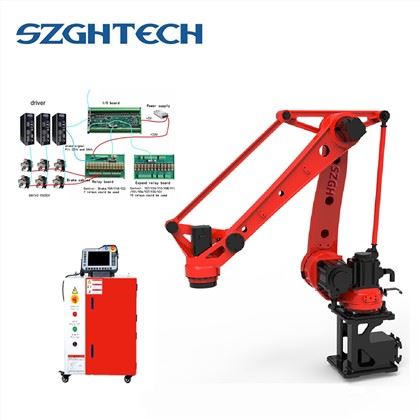Payload | 6kg |
| Structure | Articulated |
Axes | 4 |
| Reach | 1000mm |
| Weight | 230kg |
Application | Materials handling, parts transfer, palletizing, deburring &cutting |
Special Service | 1. We can customize the standard color as you need! |
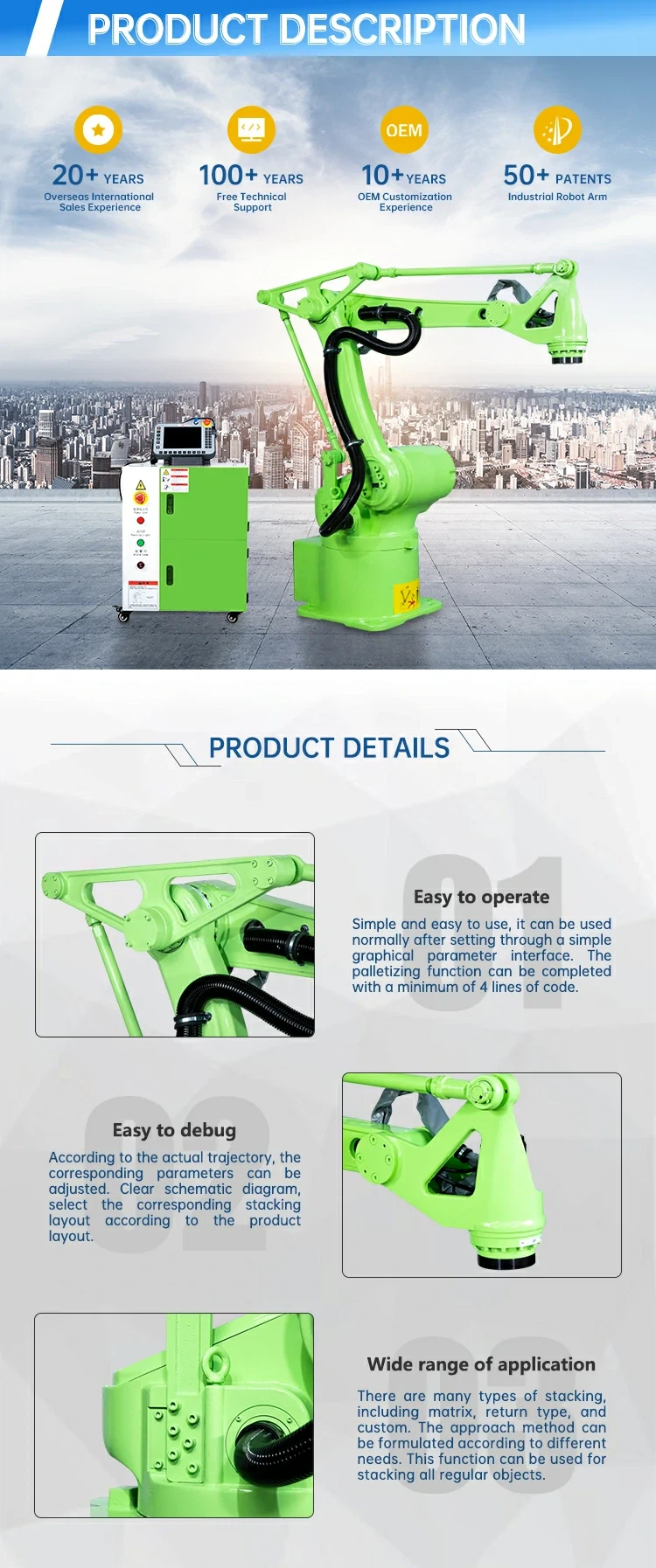
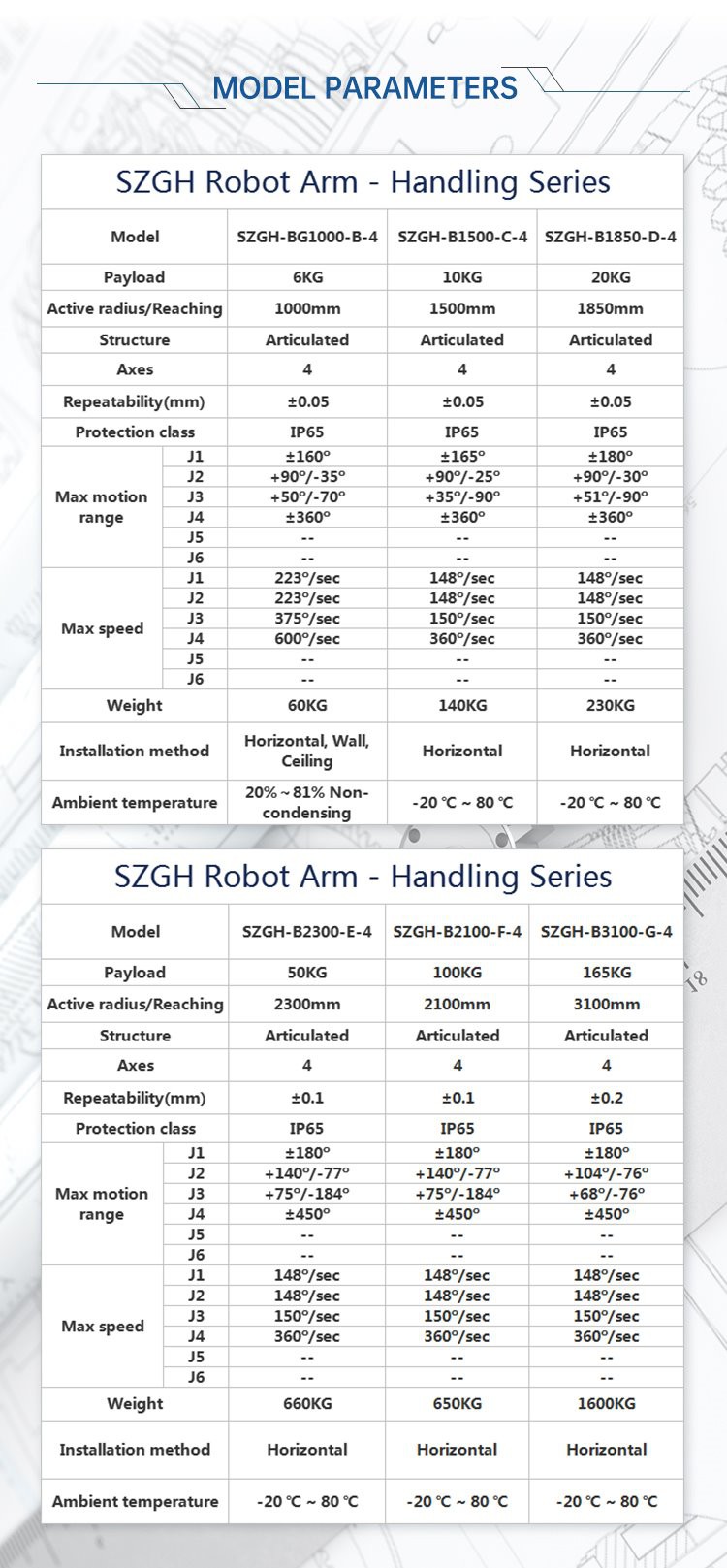
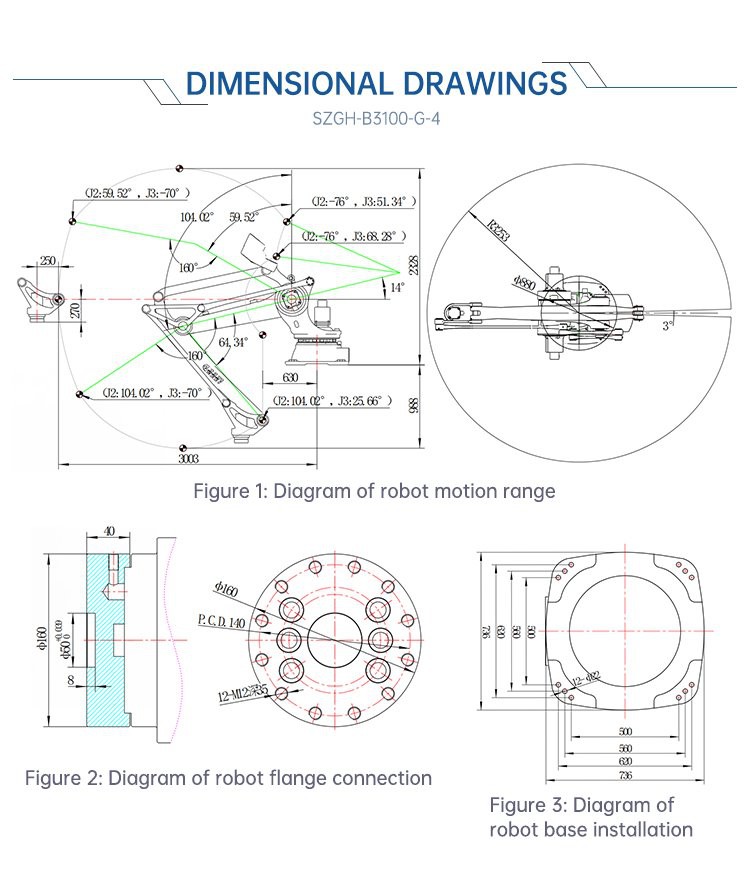
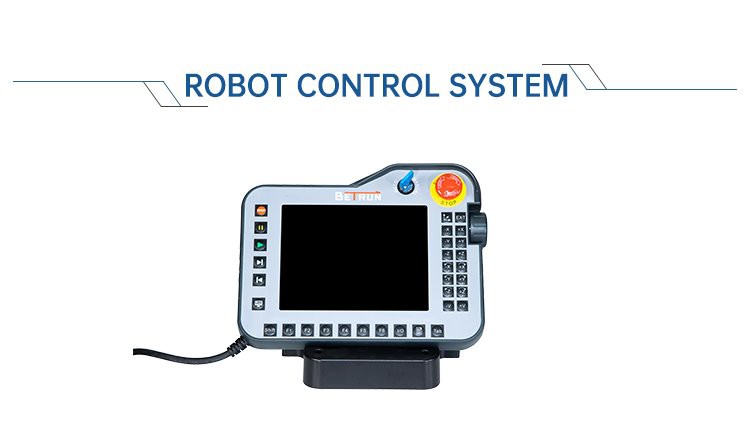
Robot controller systems:
1) Open structure for synchronization of international technology and extension of functions. Industrial standards & reliable stability.
2) Software PLC functions facilitate logic control. Process functions make programming easy.
3) Suitable for multiple increments; absolute servo. Improved computer bus connection ensures reliability and practicability.
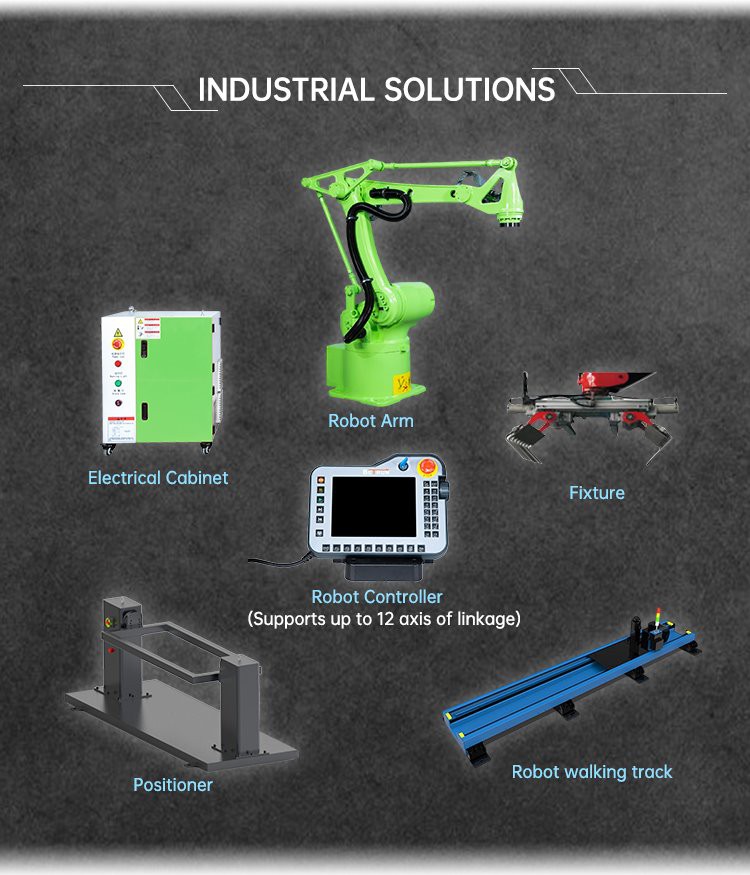
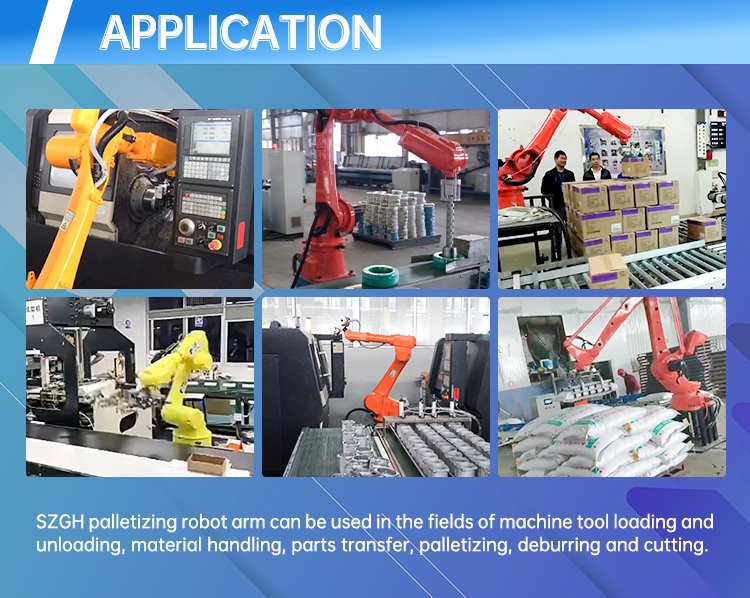
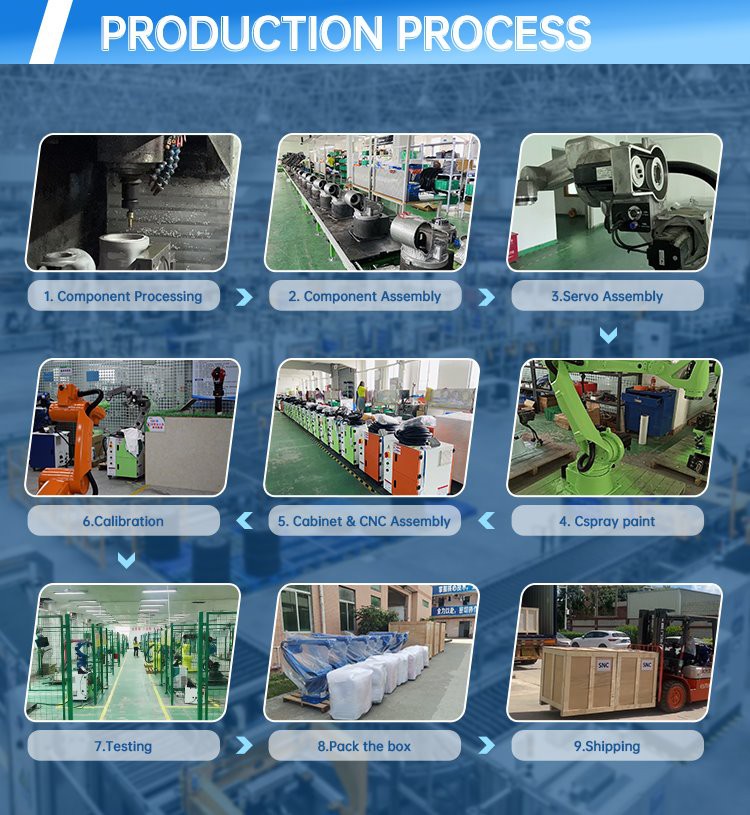
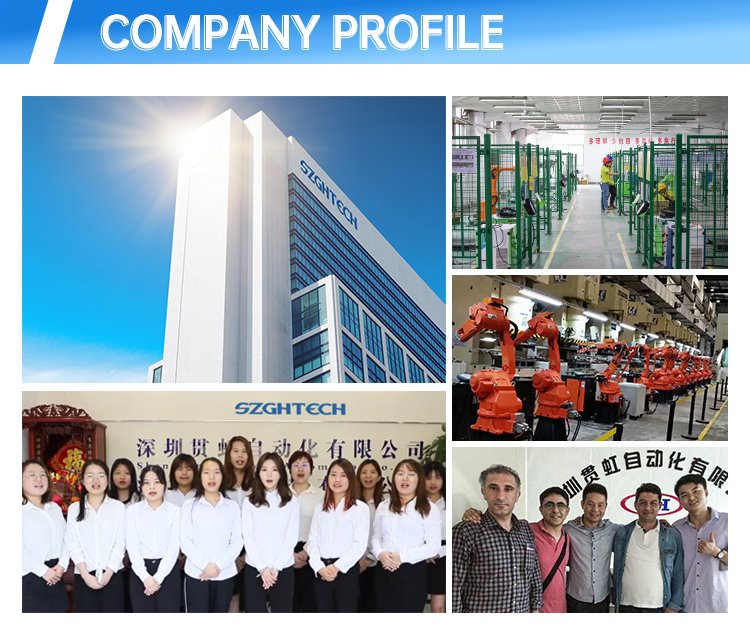
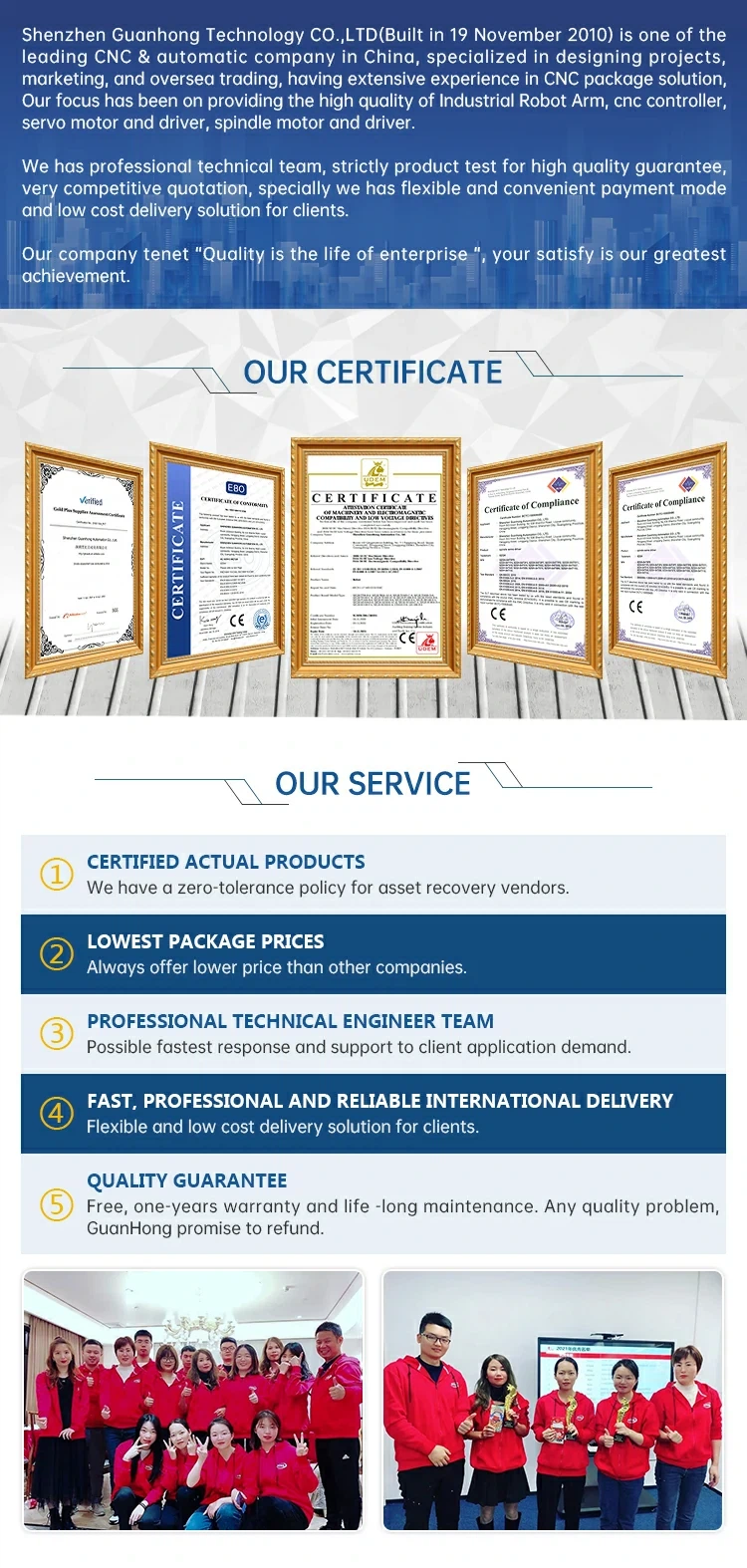
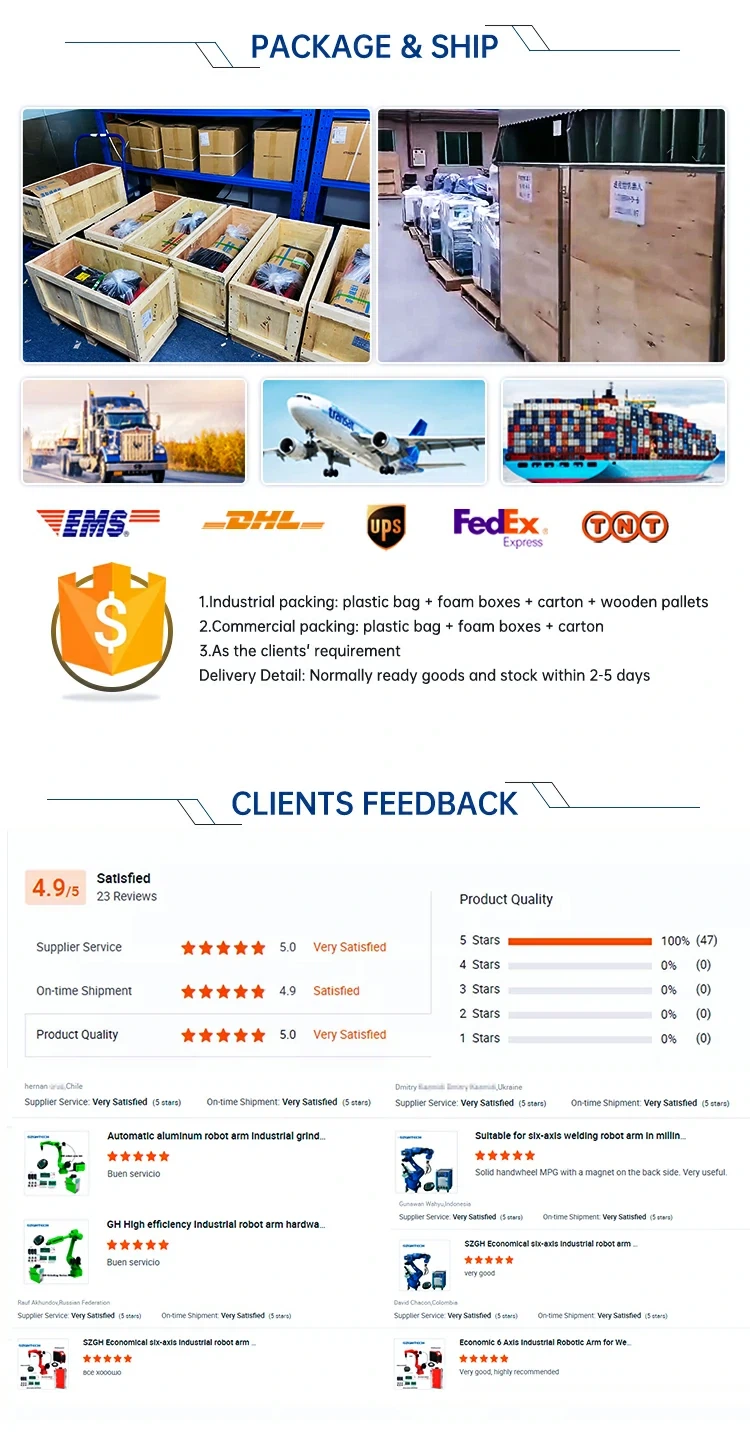
FAQ
Q1. Do you have any MOQ (minimum order quality)limit?
A: Low MOQ, 1pc for sample checking is available.
Q2. How do you ship the goods and how long does it take to arrive?
A: We often ship by DHL, UPS, FedEx or TNT. It usually takes 3-10 days to arrive. Airline and sea shipping is also optional.
Q3. How to proceed an order?
A: Initially, let us know your requirements or application. Besides, We quote according to your requirements or our suggestions.
Thirdly, customers confirms the samples and places deposit for formal order. Finally, We arrange the production.
If you have another question, pls feel free to contact us as below.


